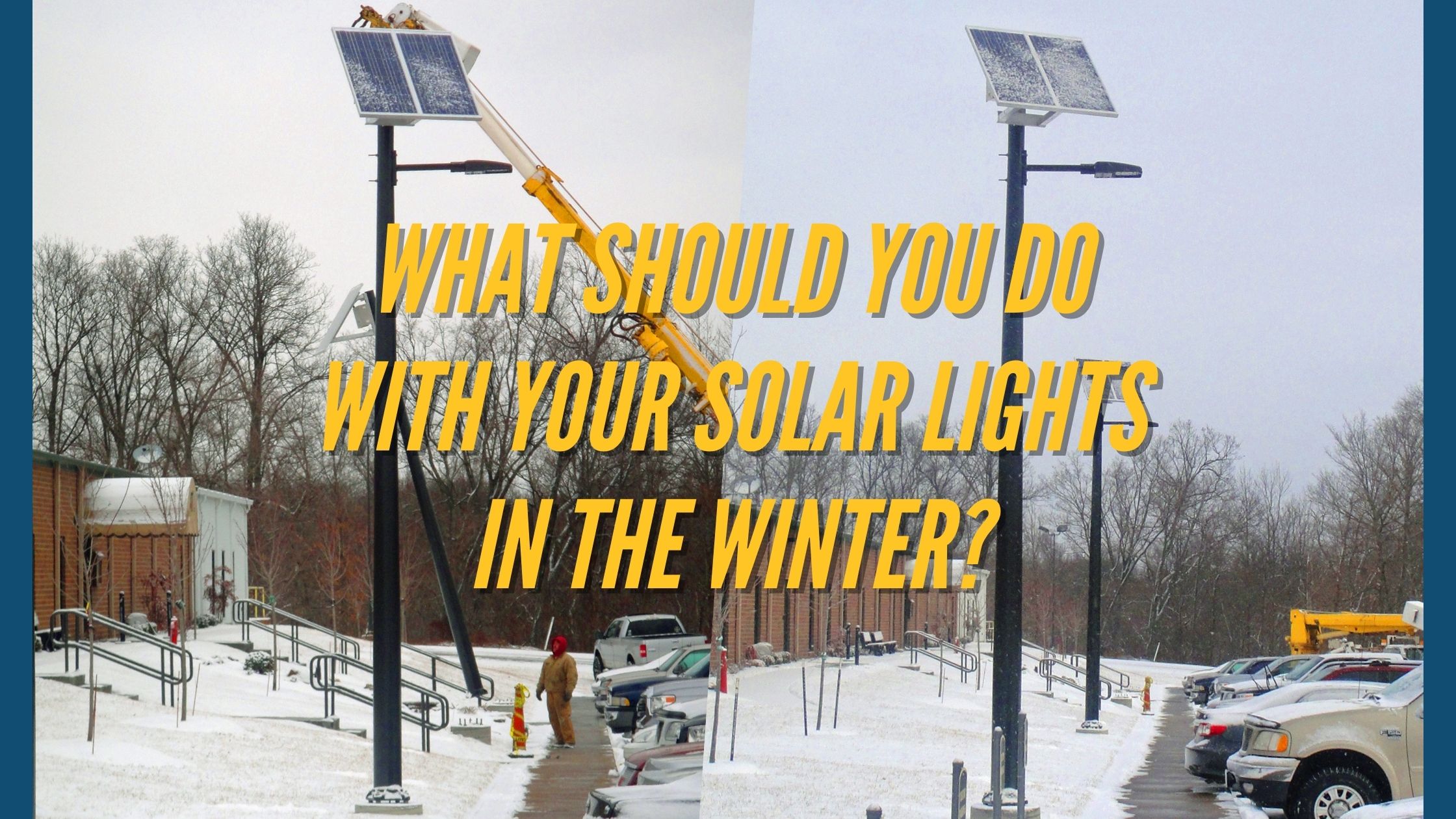


It is that time of year again. It is cold in most of the northern hemisphere. It is snowing, and there isn't as much sunshine as at other times of the year. So what should you do with your solar lights in the winter? Let's break that down.
There are two main types of solar lights on the market today: ones from big box stores and ones from companies such as us. We provide a much different system than the ones you find online or at the store.
These small solar lights have a tiny panel and one or two rechargeable AA batteries. These lights will operate if there is enough sunlight to provide a charge; however, there is little to no backup. So the chances are that they will only last a short time at night. Even the slightest snow cover can completely stop any power production on these tiny lights.
Our best suggestion for lights such as these is to bring them in until the snow is gone or provide daily maintenance to make sure they are clear of snow. After the winter months, it would also be a good time to replace the batteries maybe if you notice they are no longer charging much. This basic maintenance can help extend the life of these lights, allowing them to last for a couple of years before having to replace them.
Now, this is where we sit in the industry, and there is excellent news about our lights and winter months: you don't have to do anything. Our lights are sized for the worst-case scenario, which is basically now. We use December 21st to determine the longest night of the year and December sun hours. This sizing setup means that your lights should need no maintenance, even in the winter months.
Commercial solar lights should operate without issue through this time if appropriately sized. If you have prolonged times of cloudy weather with no sun breakthrough, then there is a chance that the lights will have a night or two of struggling, but that isn't until after 5 nights or more.
Snowfall on a commercial solar light shouldn't collect too much because the panel should be at a 45° angle or similar. This angle keeps the snow from being able to grab ahold and collect; however, if it does end up collecting on the panel, once the sun comes out and the temperature starts to rise, the panel will heat up and allow the snow to fall off.
Best of all, solar is much more efficient in the cooler months. These cooler temperatures keep the panels from overheating, and there is a greater difference between the voltages, which allows the panels to produce electricity more efficiently.
Some solar lighting systems have the panels installed at the top of a tall pole, upwards of 20-30' in the air. However, sometimes that just isn't the case in situations where the solar is installed lower to the ground for a sign or remote power applications. Therefore, you have to take precautions when installing the solar power assembly.
If you install the solar low to the ground in a snowy area, ensure that the solar array's bottom is around 1' above the average snowfall. This installation will make sure that there is room for the snow to fall off once the panels warm up. Instead of having to unbury the panels every time there is significant snowfall, your panels will stay clear most of the season. There still may be an occasion or two with all this change in weather where you may need to dig them out or give them a brush off.
Installation during this time of the year can also save you money since many installers are looking for jobs. Before frost lines set in, the contractor can install the footers, and complete all other work above grade. If the anchor bolts are placed, either using a prefab base or by pouring the bases on-site, they can sit while you wait for the solar to be ready to go. The poles can be placed into position once the solar is on site. The solar and battery assembly are wired up at the top of the pole. No underground conduit or wiring is used for these purposes.
In the end, taking extra precautions with the installation of your commercial lights, there should be no issues during the winter months. They will operate through the winter months with little to no issues if sized appropriately. Having plenty of backup, no shading, facing directly south, and the correct angle are key to operating these systems properly through these winter months.
With the small lights in your garden, it is probably best to bring them in and even do some basic maintenance on them, so they last another year. This way, you don't have to keep replacing the lights year after year and extend their life.
